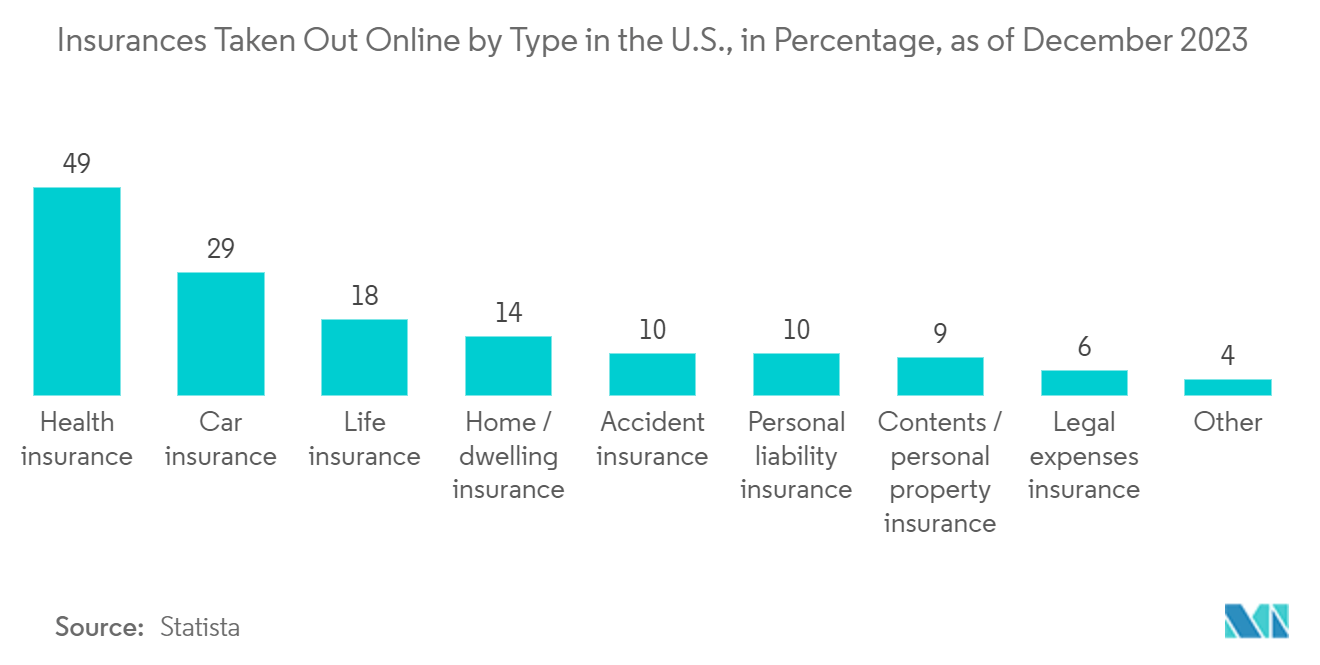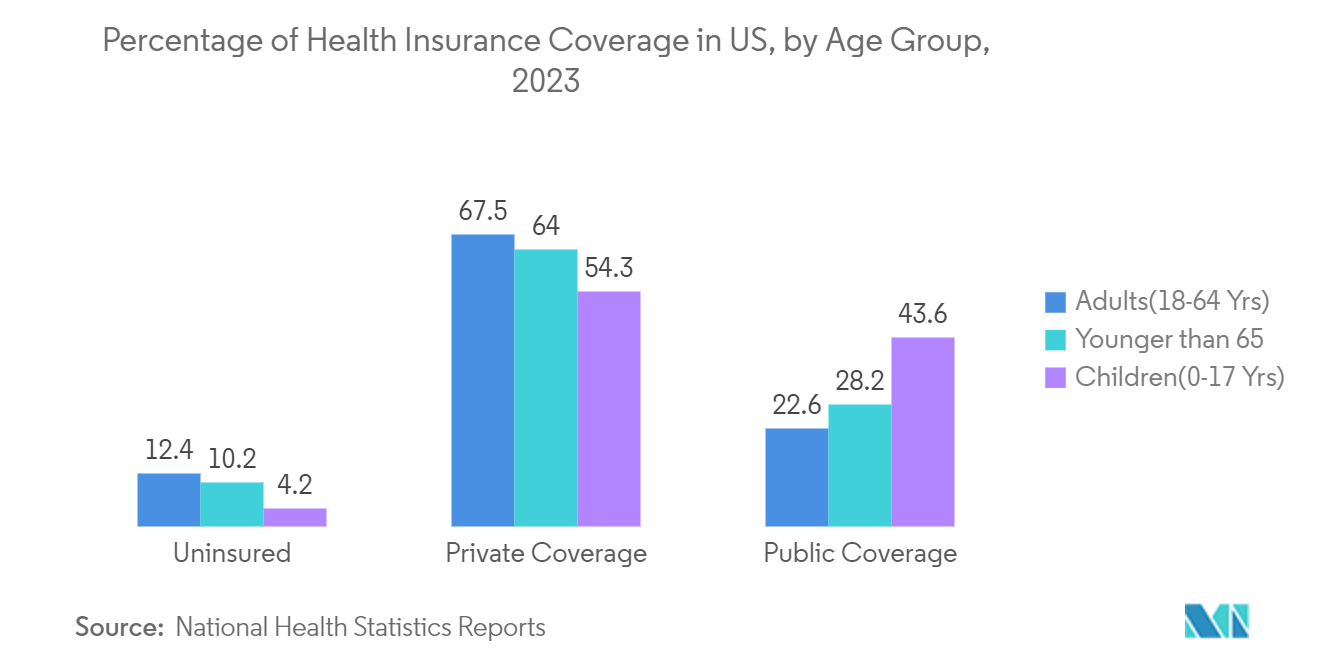Market Trends of United States Health And Medical Insurance Industry
The Online Channel is Expected to Witness New Growth Avenues in the Coming Future
The US health insurance market is experiencing significant growth in the online channel segment between 2024 and 2029. This can be attributed to the convenience of purchasing insurance policies online and the availability of guidance on discounts, offers, and plans provided by insurance companies. These factors enhance consumer confidence in online insurance purchases. The online segment is expected to witness rapid expansion due to the widespread use of the internet and smartphones, advancements in technology, changes in consumer purchasing behavior driven by digitalization, a wide range of insurance products available, and the abundance of discounts and offers on insurance websites. In order to streamline the insurance process, companies are using technology like artificial intelligence, chatbots, and machine learning. For example, AI enables health insurers to collect, analyze, and utilize large volumes of healthcare data to identify new business opportunities and optimize risk management. Additionally, AI can be integrated into insurance software to enhance medical billing while ensuring compliance with HIPAA regulations.

The Private Health Insurance (PHI) Segment is Expected to Fuel the Market Growth in the United States
Private health insurance plans in the United States generally fall into two categories, which include group health insurance and individual health insurance. Group health insurance is usually offered by employers to their employees and often provides coverage for dependents. Individuals and families can buy individual health insurance directly from insurance companies or through a health insurance marketplace.
Private health insurance plans vary in terms of their coverage and cost-sharing arrangements. They typically involve a combination of premiums, deductibles, co-payments, and co-insurance. The specific details of coverage and cost-sharing depend on the plan and the insurance provider. A variety of benefits and services, such as hospitalization, outpatient care, prescription drugs, preventive care, and mental health care, are offered by private health insurance plans. The extent of coverage varies among plans, and individuals should review their policy documents to understand what is covered. Private health insurance premiums can vary widely depending on factors such as age, location, plan type, and coverage level. The cost of private health insurance has been a concern for many Americans, and affordability remains a significant challenge for those who do not receive employer-sponsored coverage or qualify for government assistance programs. However, the increasing number of chronic diseases in the United States, including diabetes, colorectal cancer, heart disease, and degenerative diseases, is likely to lead to an increase in private health insurance enrollment. The costs associated with treating chronic conditions, such as cancer or heart disease, are extremely high in the United States. As a result, many people choose to purchase health insurance to avoid the sudden burden of large hospitals and other out-of-pocket costs.


